This blog is actively maintained by team members of My Crystal Bridge. The blogs provide insight information on Chinese cloisonne workshop, Chinese culture, history, arts and crafts. If you like to comment on any contents in this blog, please email the webmaster. Thanks.
![]() Subscribe to blog RSS feed: copy and paste the following URL to your favorite RSS feed reader
"http://www.mycrystalbridge.com/blog-feed.rss"
Subscribe to blog RSS feed: copy and paste the following URL to your favorite RSS feed reader
"http://www.mycrystalbridge.com/blog-feed.rss"

2009 Blog archives
4. Qi Bai Shi and His Paintings - Aug. 2009
Qi Bai Shi (1864 - 1957) is one of the most famous and accomplished modern Chinese watercolor painters. Although he started to learn how to paint in his sixties, his work is well known throughout the world. Being a carpenter in his earlier career influenced his watercolor paintings a lot. His contemporary Chinese pieces always had a very lively, down-to-earth style to them.
Fortunately he would live a long life that allowed him to devote to his paintings for 40 years. He reached a very high artistic level that would take other artists their entire life to achieve.
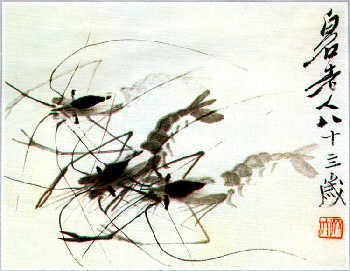
The beauty in Qi Bai Shi's paintings is their simplicity. These simple images of flowers and insects draw the attention of the viewers at first glance. With just a few brush strokes, he would create a butterfly who is flashing its wings. He was fascinated in ordinary objects and eagerly presented them in his paintings. His choice of colors is simple too. Although there is a large amount of colors that he used but the most prominent were red, blues, greens and blacks.
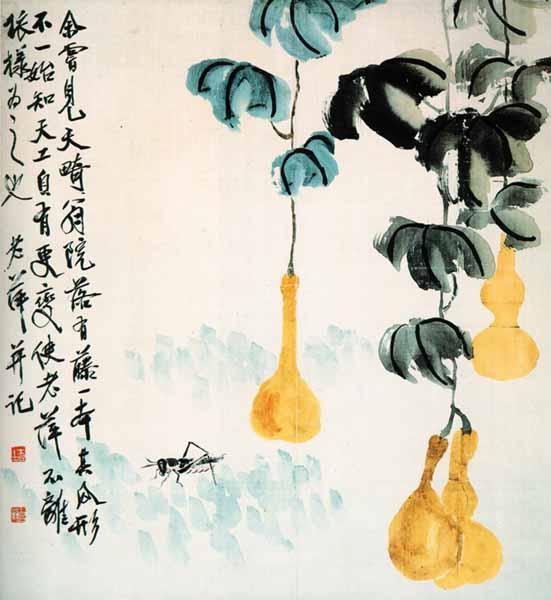
He painted a lot of birds, flowers, shrimps and insects but each painting is different from the other. He was often praised for his "freshness and spontaneity". His shrimps are amongst the best painted shrimps in Chinese watercolor. He used purely black inks with different values to create the bodies of the shrimps. Every shrimp in the same painting is different. You can almost see them swimming on the paper.
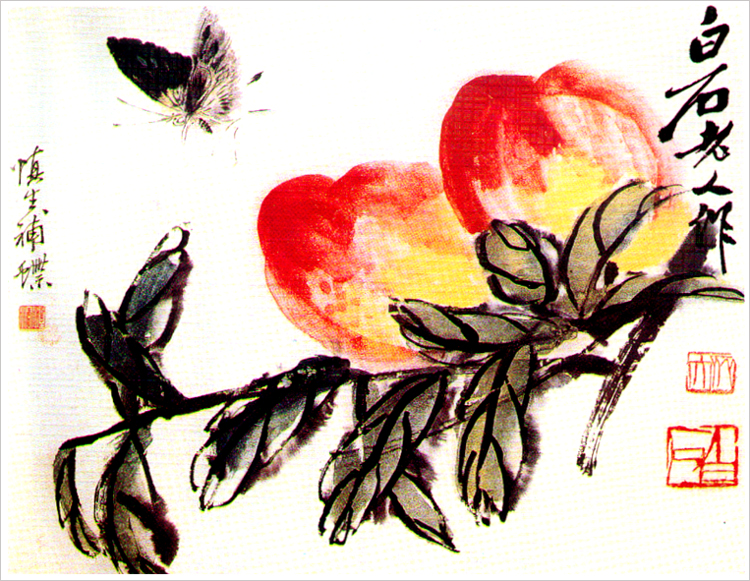
In his early years he experimented with a variety of styles. He finally landed on his own unique style which is often studied and copied today by Qi Bai Shi lovers. His style is so unique that it eventually became a branch of Chinese watercolor paintings. With all the insects and flowers he could paint in the world, Qi Bai Shi focused on a few. He would spend days observing these insects and flowers before touching his brush. Once he grasped the objects, he would quickly run his brush and inks down on paper. A fresh painting is created in a matter of minutes.
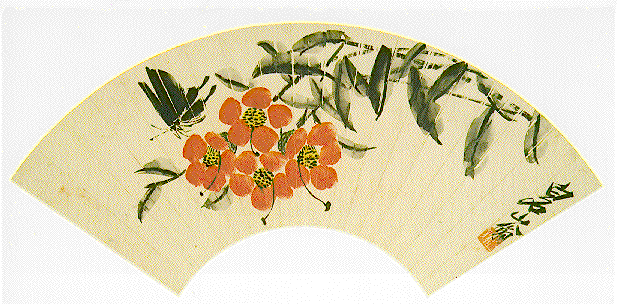
At the turn of the 20th century, some Chinese painters started to adopt western techniques into their own paintings. The biggest claim to fame in Qi Bai Shi's paintings was that even though his artistic styles matured during the early nineties, he did not incorporate western influences into his paintings. He kept to his Chinese roots and flourished.
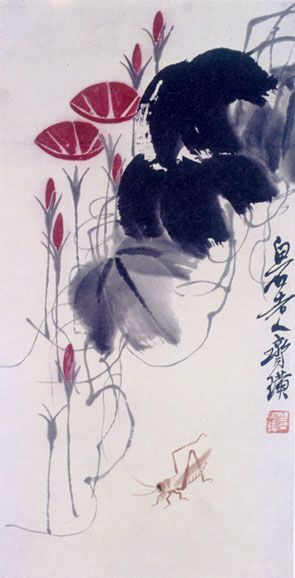
A few of his most well known paintings are The Fan, The Fisherman, The Swimming Shrimps, The Butterfly and The Cabbage. It was amazing that this artist could take something as simple as cabbage leaves and turn them into a work of art. When I was a child, I used to watch documentaries on Qi Bai Shi working on his watercolors. I was always fascinated that with a simple twist of his wrist, he would draw the wiggling tail of a swimming carp. As if he knew in advance what the finished painting looked like, he would just let the brush flow to his heart's content.
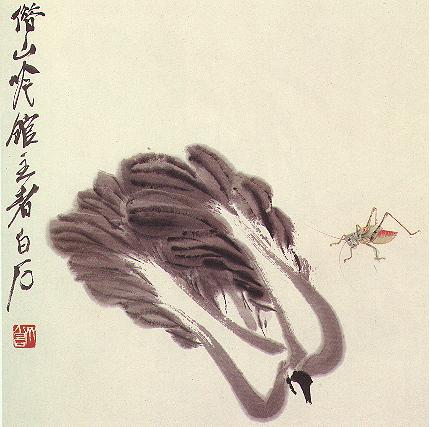
Qi Bai Shi is a famous modern Chinese artist and for a good reason - his work transcends culture and time and touches everyone who sets their eyes on his works.
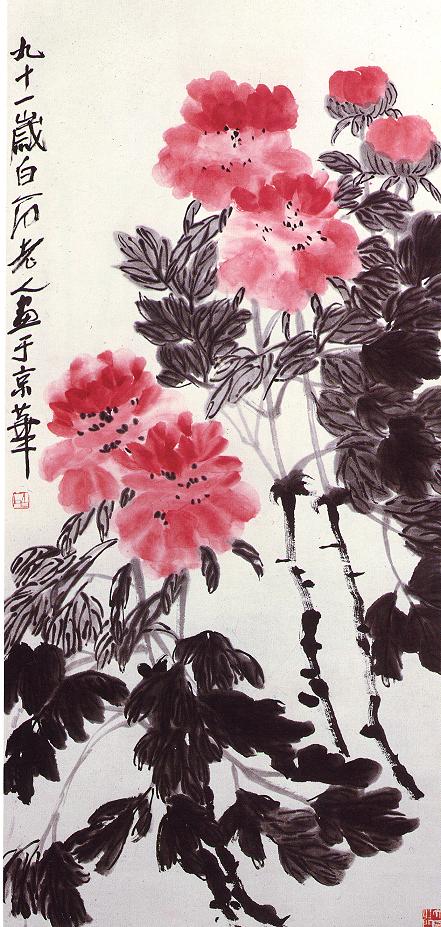

3. Visit to a cloisonne workshop in suburb Beijing - July. 2009
During my recent trip to Beijing, I had the chance to visit a cloisonne workshop for the first time in my life.
My brother and I drove to a suburb one hour from Beijing in Hebei province. The day was a sunny and pleasant winter day, the kind of day when the warm sun shines on you and makes you feel warm inside, even in the cold air. We arrived in town and were greeted by the manager in the town center. We followed his car to the workshop.
The manager and his staff took us around the showroom, obviously proud of what he had to sell. Afterwards, we got a special treat - a tour of the workshop itself. I was so exicted. I have been selling cloisonne wares for years, and I have always wondered how they are made. I was looking forward to seeing it with my own eyes. I was given permission to take pictures also.
The manager led us to a huge sun lit room with a very high ceiling. My eyes caught a pile of reddish brass sheets along the wall. These brass sheets are the basic material for the body of almost all Chinese cloisonne crafts.
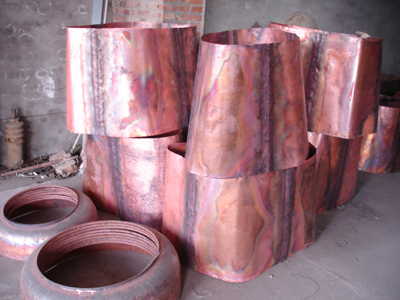
The manager told us that Chinese cloisonnes were made mainly from brass or copper. He said the Japanese sometimes uses silver. He explained that the brass sheets are soldered and banged on pre-made solid metal molds to form the vase shapes. The following picture shows the workstation for soldering and shaping the metal sheets into vases.
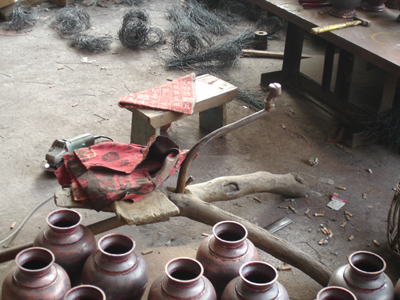
A basket of brass bottom rims made from molds.
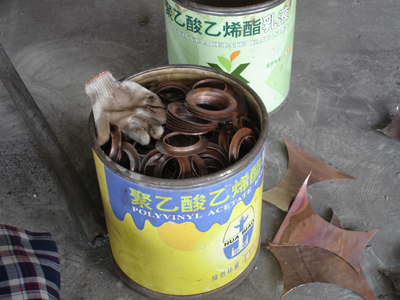
A workstation to fit rims onto bodies.
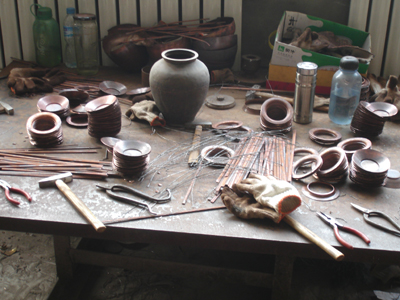
Finished bodies waiting for wiring in the yard.
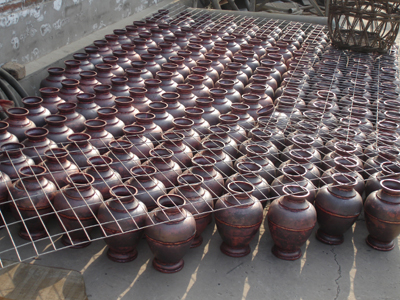
After the vases are formed, they are wired. The wiring room was also bright with sun light and there were long, wide work benches lined up from one end of the room to the other. There were a dozen artisans (mostly females due to the huge amount of patience needed to work in this labor intensive trade) hunched over their vases, working carefully and methodically, wiring the vases. My brother and I were amazed by what we saw.
At the far end, one of the women was transferring a design from a picture painted on a piece of paper to the brass body with black ink. On our side of the bench, another worker was gluing brass wires along the design lines to form cells. These cells are the "cloisonne" - "cells" in French. The multicolored enamel pastes are laid into the cells and then the entire vase or trinket box or what have you is fired in a kiln, baking the enamel on. This process is repeated two or three times until the enamel is thick and hard.
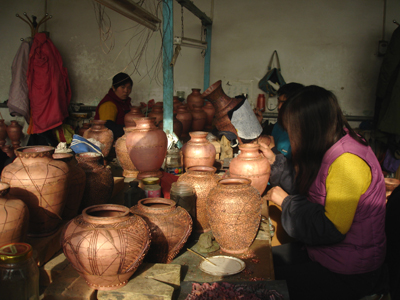
Brass stripes. They are actually 6 stripes stacked together. These stripes are shaped to their designed curves in stacks to increase productivity.
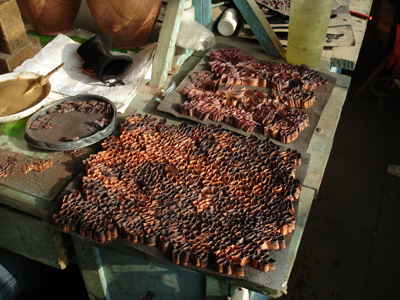
Gluing the brass stripes onto the body. Once glued onto the body, the stripes form compartments or cells amongst themselves. These cells will be filled with enamel later on.
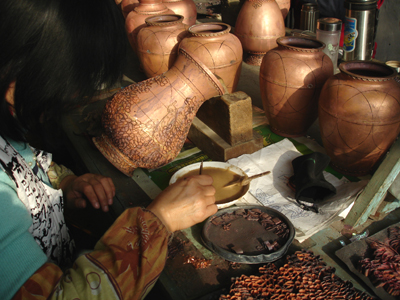
Completely wired bodies.
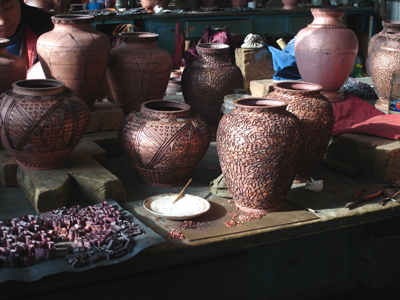
A stack of bowls with different colored enamel pastes in them. The enamel pastes are used to fill the cells (cloisonne in French) on the body.
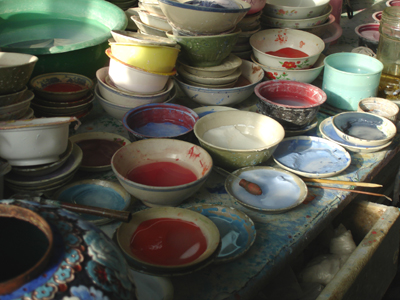
A worker applying enamels into the cells.
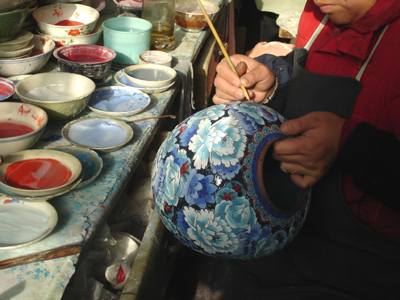
Once the enamels are applied, the vases are ready for firing. The firing temperature is about 2000 degrees Celsius. The enamels melt at this temperature and fuse onto the brass body and compartment walls. A total of three firings are required for each object. Below is a picture of the firing kiln.
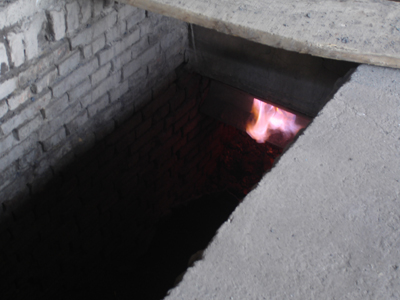
After each firing, the enamels shrink so more applications are needed. Below is a picture of some vases after the first firing.
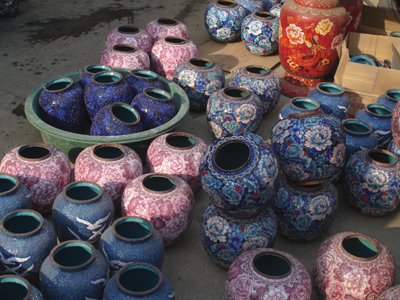
After three firings, the cloisonne wares are polished on a rotating shaft with soft sandy stones. A fully polished cloisonne vase has a very smooth and shiny surface. Once polished, the vases are usually gilded with gold to make the divisions between colors stand out. Below is a picture of a pile of finished vases.
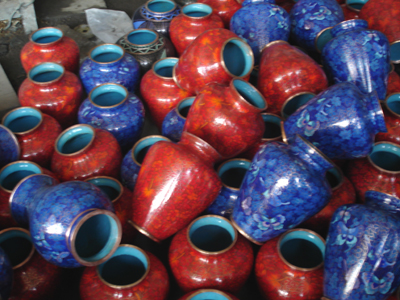
The tour took about half an hour. My brother and I had tea and thanked our hosts for their hospitality. Also we told them our intentions to possibly buy from them in the future. Now I just need to come up with some custom designs for our products. I have a few good ideas...

2. Growing up in Beijing - June 2009
Growing up in Beijing is like growing up in NYC - you are part of something grand but you are not, unless you are the heir of well heeled bankers.
I and my brother was born to a lower middle class family in the 1970s. My childhood was mostly simple and happy. I enjoyed the few toys
my parents were able to buy and the companies of similar aged kids living in the same narrow alley.
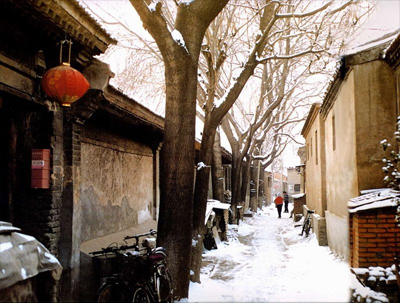
Since ever in my childhood, I was told all kinds of stories about old royal families who started to live
in Beijing since the Yuan dynasty in the 1400s. These emperors and empresses made Beijing grand and made the Beijing people grand by living
under their feet.
School for children in China is tough because there is tremendous competition - the population is huge - and education is the only way for most people to live a decent life as an adult. School was particularly difficult for me and my brother because my mother was an elementary school teacher. I had a lot of homework to do after school and on weekends. I always felt that I had to work twice as hard as everyone else to get a little bit ahead.

But there are advantages to having the teacher live in your home, and one of them is that if it's midnight and you don't understand something you are studying,
you can ask her. Thanks to my mom, I was able to stay top ranked in my classes all the way to college.
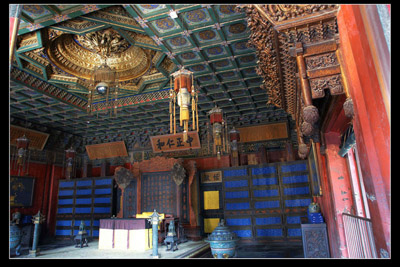
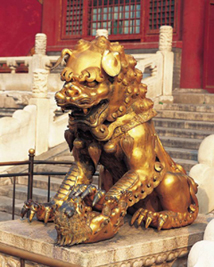
In between midterms and final terms, I spent most of my free time wandering up and down the city to explore the many museums and historical exhibits such as the natural science museum, the forbidden city, the summer palace, the North Sea Park, the Great Wall and Temple of Heaven. I have seen photographs of the Great Wall taken from space and it always amazed me that men had built it, men with two hands and two legs and a human spirit - and yet you could see it from space. I always thought about what mankind could do if he really decided he wanted to do it, if he had the will to do it, one brick at a time.
I also spent whole days in the Forbidden City wandering around until the guards chased me out. I would stand only a few feet away from artifacts that were thousands of years old, created by the advanced ancient civilizations that were my forebears and my linesmen. These treasures were made of cloisonne, jade, gold, brass or wood. I wondered often how on earth those ancient craftsmen could create such miracles without any precision tools, in awe of the patience of these artists, the care they took in the act of creation, and the ecstasy they felt that must have been so strong that they were willing to work their entire lives just to get it. I thought a lot about the emperors and empresses who lived their charmed lives by squeezing the last drop of blood out of the people they ruled.
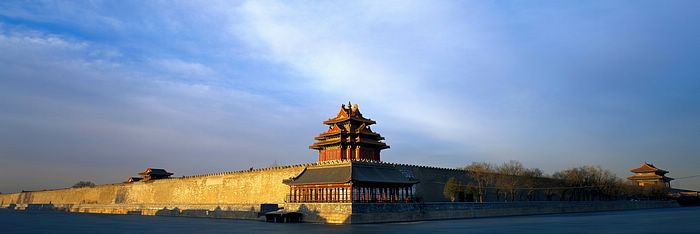
My favorite place to hang out in Beijing was the banks along the moat surrounding the four walls of the forbidden city. In springtime, I would spend many afternoons sitting on the
cool stone steps leading to the water, looking at the watchtowers where the walls joined. I would think about how many people lived and died inside these walls, never thinking about
what lay outside, their lives and existences lived in the same places, year after year, day after day.. These people's lives were granted by the emperors and could be taken away at
the whim of the emperors. The emperors grew great and strong because of this intense power, this absolute authority. They worried about nothing, and they had time to enjoy the great
artworks their subjects created for them.
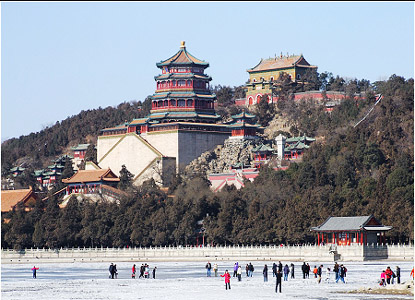
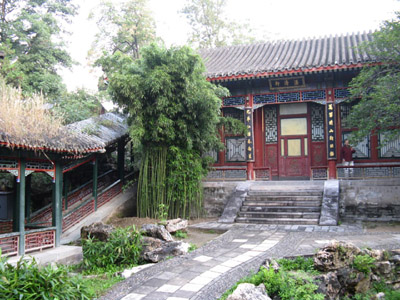
The Chinese feudal society finally came to an end through decade long revolution in 1911. The royal family was eventually driven out of forbidden city. Even though the emperors are
long gone, the grandness they built in Beijing lingers in the air. If you walk in Beijing today, you can still feel the care free atmosphere demonstrated by people walking their birds
in the morning, playing chess on a stone table in the park or casually chatting in the middle of the street. Beijingers are never in a rush. We feel that the hustle and bustle of life
can wait. We savor every second and enjoy the here and now.
Sometimes, when I was working in NYC, I'd walk in Central Park on a Saturday morning. The food vendors selling hot dogs, the portrait artist busy drawing or hustling to get $20 commissions, the young kids playing in the fountain and the guy running along aside his dog reminds me so much of Beijing, of Beijing's grandness, which draws me back every year.

1. In search of mineral crystals in western China - May 2009
By Xuepeng Liu, May 2009
It was a warm early summer in Beijing when my friend Lee and I decided to start our journey to western China's Sichuan province to search and stock up on mineral crystals. Western China is crisscrossed with high mountain ranges. The most well known of these is the Himalayas, but there are many. Beryl and rock crystals grow in abundance in the mountain caves of Western China - they are usually found in the caverns above 4200 meters (around fifteen thousand feet, or just under half the height of Mount Everest). We are determined to reach the source of these crystals.
We hopped in our 10 year old Cherokee jeep and started our 2000 mile journey across China. After 3 days of rutted, flooded roads, detours, washed out bridges, and lungfuls of air thickened by black coal dust, we finally crossed the province border. People walking along the side of the road looked at us curiously, and breathing gets harder as the air gets thinner. I get an odd feeling of jamais vu-a sense that I have never been here before, although I know I have. The effect is disquieting, and it plays on my nerves, making me edgy and a little snappish.
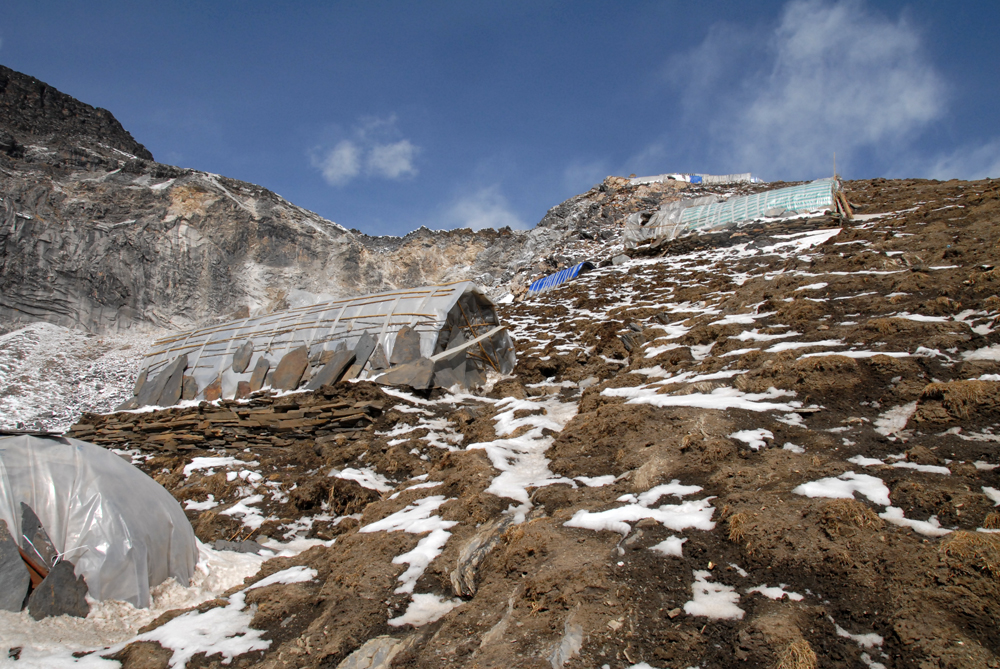
We reached the base camp at Xue Bao Ding mountain. We are about 9000 feet above sea level and the dusk is falling - the lowlight is coming. We set up camp among five or six other tents
already pitched. We locate a depression in the rocks. The rocks look secure and the ditch will serve to break some of the bitter, frigid wind. It took the two of us four
hours to set up our single tent, but now we will have a temporary home. We'll be spending the next week in these mountains.
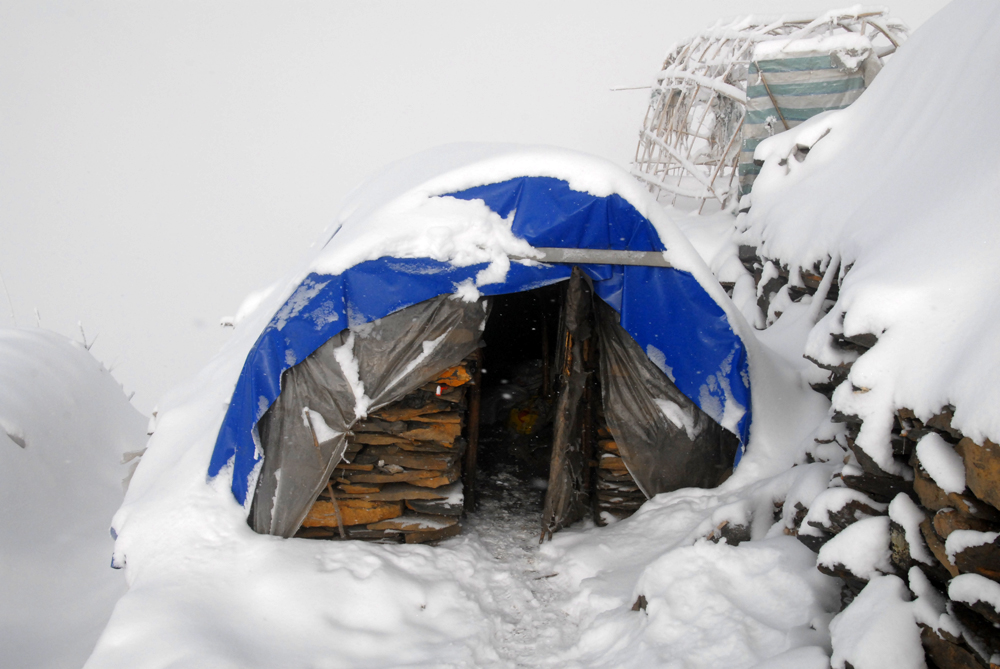
The next morning when we wake up, our tent is all covered in snow. I am freezing from inside out - the cold rips through me, cutting and burning. I wait eagerly for the coming
of the sun.
We wolf down breakfast, pack our supplies and follow behind our guide who knows where the caves are. The guide is a local guy in his thirties. His skin is thick and brown
from the weather and sun. His arms are knotted like tree trunks of solid muscle - his forearms are as hard as rocks and as big around as my calves. He speaks almost not at all
but knows the mountains well enough to navigate them in his sleep. The air is getting thinner and our guide has to wait for us from time to time. After three hours of solid climbing,
our guide finally said, "We are here, you can see the caves up there."
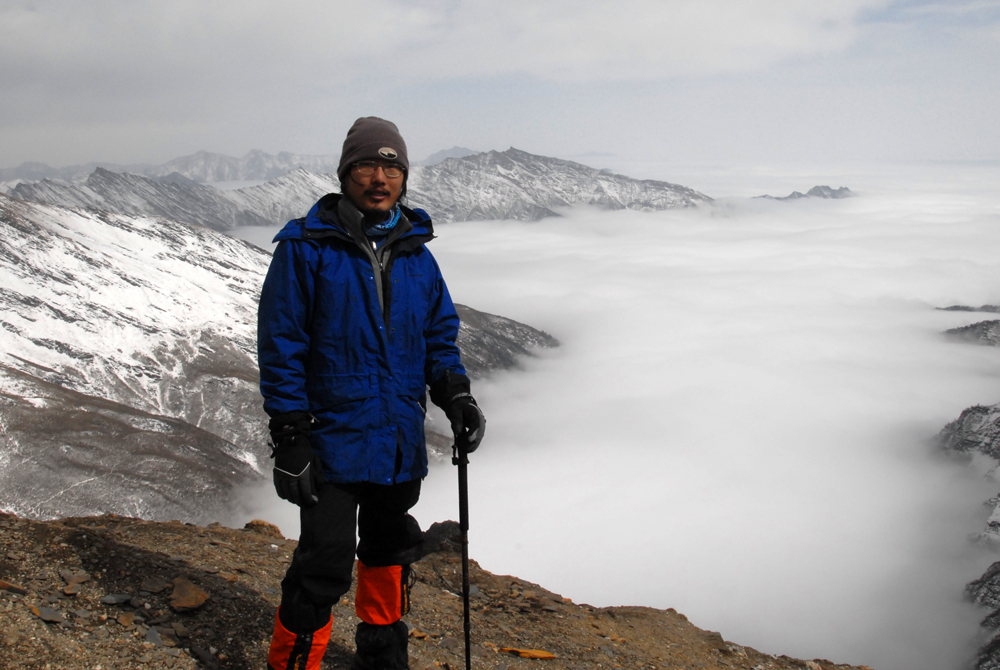
We are in a low and narrow cave formed by rock movements that created fissures in the earth. The cracks are big enough for people to walk in. Underneath the earth and rocks, where
the temperature and pressure is high enough, the crystals will form. Later rock movements bring these crystals to the surface where curious people like us came into the caves and
discovered them.
Once inside the cave, we turn on our flashlights and start looking for crystals. They are not in the obvious opens. We have to look hard, behind and under other rocks. The cave is deep and dark. I can hear the fragile, thunderous echo of my own breathing. Thanks to our guide's experience, we find our first beryl crystal specimen underneath another rock. It takes quite some effort to break it off the rock bed. I can't see clearly what it looks like under the dim flash light. We keep searching and find two more.
Finally we get out of the cave, I hold the crystals in my own hands. My heart races like the heart of a rabbit when I lay my eyes on them. These beryl crystals look raw and natural. The crystals are clear like the water from a spring. The afternoon sunshine shoots through them and refracts along the edges. I look deep inside the crystals; it seems like it contains all of the colors in a rainbow, and some, I almost think, from outside of one.
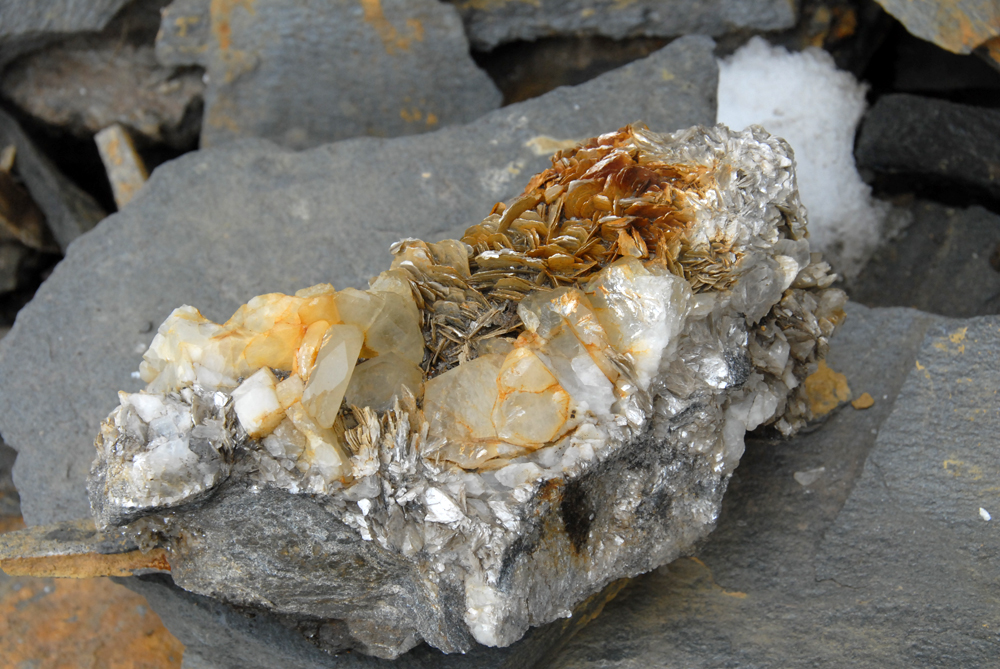
We kept going back to the caves for the next week and collected more crystals. Our guide told us that there was a town called PingWu at the foot of
mountains. People in the town mine these crystals and we should find more there.
We left the base camp a week later and came into PingWu town. There are a lot merchants selling these crystals in the markets. We bought enough to load our Jeep with them, so many that the extra weight provided good traction for the car on the journey home It's much easier this way to stock up but the experience of discovering them ourselves is priceless. I promise myself that I will soon be back to PingWu - and that someday, I will return to the dark caves in the mountains.

